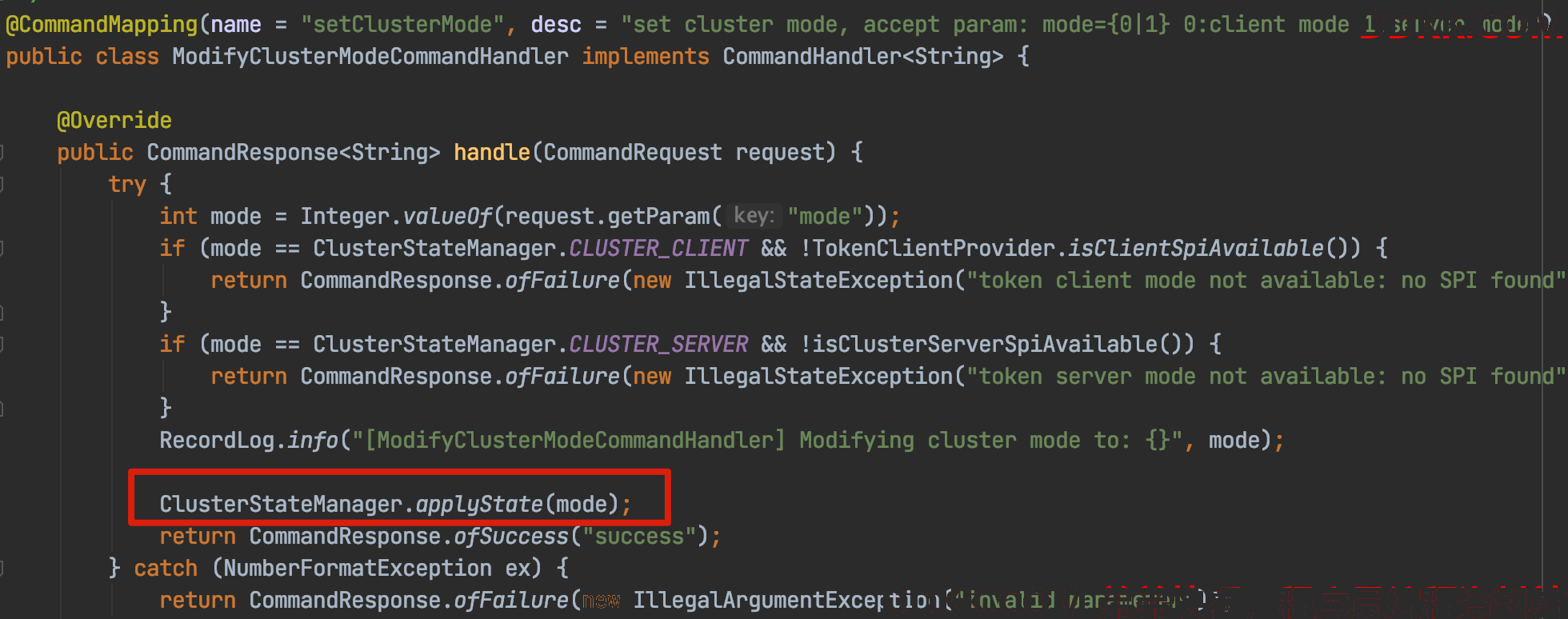4、Sentinel 教程进阶 ClusterStateManager
当我们设置token-server或token-client时,sentinel-dashboard第一步就会调用api: /setClusterMode

public static void applyState(Integer state) {
stateProperty.updateValue(state);
}
从上图我们看出,收到请求后的主要逻辑在ClusterStateManager.applyState(mode)中,因此我们要了解ClusterStateManager。
ClusterStateManager
该类主要负责管理集群的状态,我们看一下它的属性
private static volatile SentinelProperty<Integer> stateProperty = new DynamicSentinelProperty();
private static final PropertyListener<Integer> PROPERTY_LISTENER = new ClusterStateManager.ClusterStatePropertyListener();
- stateProperty:类型为DynamicSentinelProperty
- PROPERTY_LISTENER:类型为ClusterStatePropertyListener
ClusterStateManager中的静态方法会将PROPERTY_LISTENER注册到stateProperty中
static {
InitExecutor.doInit();
stateProperty.addListener(PROPERTY_LISTENER);
}
ClusterStatePropertyListener
PropertyListener的实现类
private static class ClusterStatePropertyListener implements PropertyListener<Integer> {
private ClusterStatePropertyListener() {
}
public synchronized void configLoad(Integer value) {
ClusterStateManager.applyStateInternal(value);
}
public synchronized void configUpdate(Integer value) {
ClusterStateManager.applyStateInternal(value);
}
}
当触发configLoad或configUpdate方法后都会执行ClusterStateManager.applyStateInternal(value);
applyStateInternal的逻辑:
- state=0:启动集群client,setToClient()
- state=1:启动集群server,setToServer()
- state=-1:停止集群client和集群server,setStop()
private static boolean applyStateInternal(Integer state) {
if (state != null && state >= -1) {
if (state == mode) {
return true;
} else {
try {
switch(state) {
case -1:
setStop();
return true;
case 0:
return setToClient();
case 1:
return setToServer();
default:
RecordLog.warn("[ClusterStateManager] Ignoring unknown cluster state: " + state, new Object[0]);
return false;
}
} catch (Throwable var2) {
RecordLog.warn("[ClusterStateManager] Fatal error when applying state: " + state, var2);
return false;
}
}
} else {
return false;
}
}